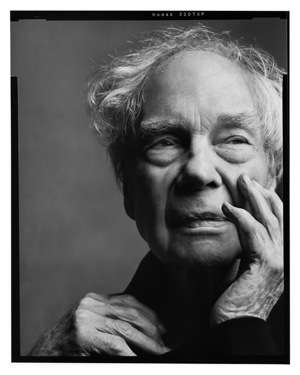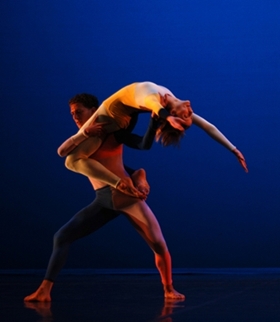This summer, dance lost two of its most accomplished artists, Pina Bausch and Merce Cunningham. In life, both were prodigiously innovative, creating performances that provoked admiration and hostility, and composing work that exerted influence not just within dance, but further afield. Yet their passing is just as momentous, drawing attention once more to the tenuous hold that their life’s work – and all dance - has on existence. Their deaths have imparted a new urgency to old questions - what remains and what can be passed on?
.jpg.aspx)
In one sense, this is nothing new. Even beside other performing arts, dance holds its own as the ephemeral art par excellence. A poetry or music recital may be just as fleeting, much as last night’s performance in The Abbey will never be seen again. But in these instances, print production and a standard system of musical notation ensure a baseline reproducibility of any given performance. By comparison, a dance, being solely reliant on personal recollection, muscle-memory and oral instruction for its transmission, seems frail and transient.
To those unfamiliar with it, dance can seem arcane. But the fundamental challenge facing dance artists is easy to grasp. All you need do is consider any physical endeavour, for instance, the 1970 World Cup semi-final between Italy and West Germany. Now, imagine that all of it – from first kick to final whistle – was your creation. Then imagine having to reproduce each pass and interception of this a month later. Or a year. Maybe with new players. On another continent. In this light, it’s easy to grasp how a choreographer’s understanding of permanence and performance may be quite different to that of a playwright or composer.
Of course, it’s not that there has been no concern before now about the preservation and transmission of choreography and technique. Almost everyone I have spoken to has – and sooner rather than later - pointed to the traumatic precedent offered by the grand dame of modern dance, Martha Graham. Following her death in 1991, her appointed heir and the company she had built fell into fractious dispute over copyright, a damaging conflict that took years and a costly and bitter court case to resolve.

Tragically, the unexpectedness of Pina Bausch’s passing suggests a precarious and uncertain future for her work; in happy contrast, the opposite can probably be said of Merce Cunningham’s. In 2000, with the Graham case in full swing, the Cunningham Dance Foundation (CDF) commenced development of its Living Legacy Plan – a strategy to ensure the orderly winding up of the CDF and the comprehensive preservation of as many aspects as possible of Cunningham’s work as choreographer and innovator. Central to this will be the creation of some fifty ‘dance capsules’: digital packages documenting a Cunningham repertory work, including performance videos, sound recordings, lighting plots, décor images, costume design, production notes from rehearsal and performance, and interviews with dancers and artistic staff. (The first capsule is due for presentation at the Association of Performing Arts Presenters (APAP) in New York next year). These measures, along with the Cunningham technique, seem likely to ensure that Merce Cunningham’s reputation and influence will be lasting.
Interestingly though, these capsules will not incorporate any form of dance notation, the view being, apparently, that with the advent of video technology, notation is now superfluous. Such a view is not unique to the Cunningham camp – Graham didn’t want her dances notated either. And no one would argue that there aren’t limitations to such notation systems. But it does suggest a number of interesting avenues of enquiry, about how the methods by which an art form is transmitted often determine not only its practice, but its future development. Whether the means of transmission are primarily oral, written or recorded becomes then, a matter of great significance.
In most traditional societies, instruction in any kind of specialised knowledge - be it philosophy or dance – was conducted within complex modes of social interaction and hierarchical structures. Examples of this abound, whether you take the families of hereditary jurists and poets in medieval Ireland, the music and dance gharanas of Hindustan or the family styles of countless Chinese martial arts.
Instruction tends (or tended) to rely on rote learning of exemplary forms, the process of teaching relying greatly on precedent and oral instruction. While capable of ensuring successful transmission of knowledge, the path to mastery was (and remains) long and arduous. In Kathakali, for instance, training commences from age ten or younger. Yet despite the cultivated conservatism, these were not static forms. Tai Chi Chuan, for example, is a traditional name encompassing a flux of styles – Chen, Yang, Wu, Hao, Sun. Each one may reflect the desire of practitioners to innovate, augment and amend what they had learned…or, equally, each practitioner might be seen as having suffered some loss – of precision or ambition.

In any case, the advent of modernity on a global scale has, by undermining traditional societal structures, fatally compromised the viability of this mode. Those hierarchies and relationships that once sustained so many indigenous traditions of dance, music or poetry are failing.
What, then, is the alternative? There are those who believe recent innovations in video technologies hold the key to safeguarding the legacy of choreographers. But not all. Others take as their starting point an innovation that had transformed the fortunes of another art – a standard musical notation.
It has long been thought that dance cannot adequately be captured by notation. Hardly surprising, given the challenges of setting down in two dimensions the movement of a body in three. And yet, since the fifteenth century, countless attempts have been made to invent a satisfactory system of dance notation with, at present, at least three systems – Labanotation, Benesh Notation and Eshkol-Wachman Movement Notation – being espoused as the solution to the matter. Each has something to commend it. And it is important to remember that, however quixotic these inventions may appear, they have as a precedent the existence of a standard musical notation.
Many claimed such a thing was impossible; and it took many centuries of refinement but, when it did arrive, its impact on music was profound. Certainly, it entailed a certain level of restriction – it was not suited to all kinds of music. But through it, it became possible to specify the essential elements that made a work of music. And by preserving that work, by ensuring the replication of compositions and facilitating the exploration of music patterns less dependent on individual memory, notation made possible composition of greater complexity and extension. It gave this art a history, a shared storehouse to which composers could turn and draw upon in their search for inspiration. And it led to a growth in the formulation of music theory, the results of which in turn provoked new work, new discoveries.
Can we imagine the same having happened had we, by some means, found a way to record music in some way other than through the use of notation? Perhaps; we’re an inventive species. But given the high-status accorded to text and literacy within Western civilisation, it seems unlikely. Similarly, although the use of video technologies has become indispensable – and justifiably so - we, as a culture, remain in thrall to the word, to language, printed or written. We are comfortable with this form. We find it easy to invent with it, enjoyable to create through it and it is second nature to us to play with all these symbols on sheets regardless of whether those symbols represent speech or music. Or some day, movement. So, in all likelihood, the future importance of a viable standard dance notation cannot be ruled out.
But if this is so, what might such a development entail for dance? If choreography notation took its place at the core of all study of dance, the way music notation does in its artform, how might that affect what work is created? Or how it is created? What rich earth for new work might two centuries worth of notation choreography lay down?
No score will ever capture the complexities of a performance. Instead, it will always remain a zero-point of creative ambiguity, a gateway by which the intent of the artist – today a composer, someday perhaps, a choreographer - emerges into the living presence of today’s performance.That, in the end, might be the finest afterlife any choreographer might hope for.
See also
www.pina-bausch.de and
www.merce.org.
Duncan Keegan is an actor and a writer on dance. His blog of this year’s Dublin Dance Festival is available on www.dublindancefestival.blogspot.com